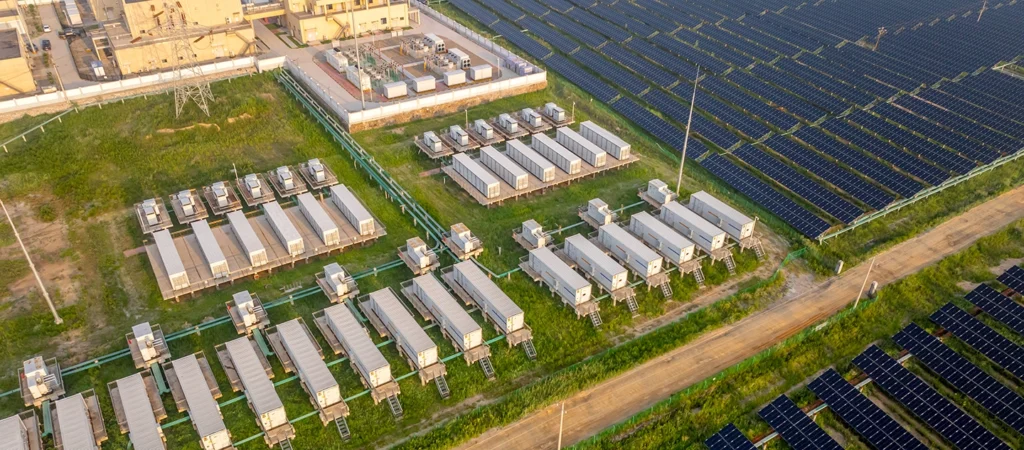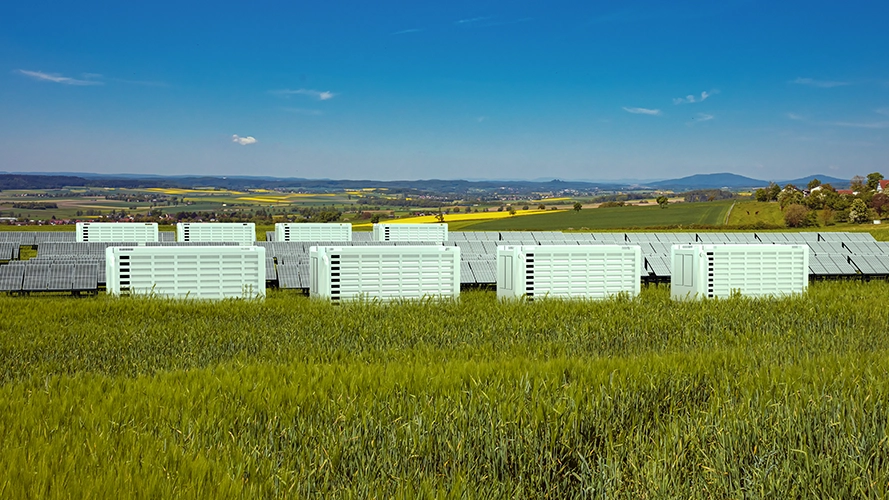
Energy Storage
Our work in battery energy storage systems and grid energy storage systems helps create a safer, more sustainable future for clean energy.
What is the Risk to You?
Energy storage systems are essential for advancing renewable energy adoption, but they must be managed safely to prevent hazards such as fires. Learn about the safety risks associated with energy storage and how standards can help protect you and your community.
By the Numbers
Hover over each stat below to learn more.
Keep reading to explore examples of energy storage safety measures in action.
Battery & Energy Storage Safety Resources
We are committed to improving the safety of everyone vulnerable to energy storage risks — and it starts with education. Explore these resources to equip yourself with the knowledge you need to store and use stored energy safely.
-

View From the Top Conversation With Dr. David Steel at Axios: Pushing Forward on the Path to Clean Energy
In 2023, UL Standards & Engagement presented at an Axios event, examining how policymakers, companies, and consumers can work together…
-

Consumer Perceptions on Sustainability & Energy Transition
In this report, we surveyed 4,032 U.S. adults to find out their concerns about the environment and its natural resources.…
Frequently Asked Questions

most commonly asked
What makes energy storage systems potentially dangerous?
These systems combine large numbers of lithium-ion battery cells to store large amounts of energy relative to their size. However, these batteries can overheat and explode or catch on fire if damaged, malfunctioning, or otherwise not properly engineered and manufactured. Fires involving lithium-ion batteries are more difficult to extinguish, posing unique challenges for firefighters.
How do standards help make energy storage safer?
Standards like UL 9540 provide requirements for safe installation, maintenance, testing, and safety evaluation of energy storage systems. They address specific hazards like explosion control and thermal runaway and include warning systems that advance operators’ notification of potential safety issues.
How do energy storage standards fit into the bigger clean energy picture?
Energy storage is part of a complex value chain that includes generation, transmission, distribution, storage, use, and repurposing of equipment. Standards help ensure safety at each stage while enabling the transition to renewable energy.
Spotlight
Energy Storage Safety Standards
Safety standards have the power to save lives. Explore UL standards that improve energy storage safety and prevent related risks.
Our catalog includes more than 1,700 safety standards and documents that are regularly updated and added to. Explore how our standards are making the world safer for you.
Get Involved
The best standards are made possible by diverse voices and deep collaboration. Be part of the process by helping inform the next generation of standards.

Technical Committees
Each TC is a diverse group of experts representing a broad range of perspectives and interests, including consumers, manufacturers, regulators, supply chain professionals, and more.
As a TC member, you will review proposals for new or revised standards and work collaboratively to achieve consensus through balloting in our transparent process.

Stakeholders
Stakeholders can submit, review, and comment on proposals for new standards or revisions to existing standards. While these individuals cannot vote, the TC considers their input during the standards voting process. Since standards affect everyone, all are welcome to participate as stakeholders. Register online through our Collaborative Standards Development System, CSDS.
